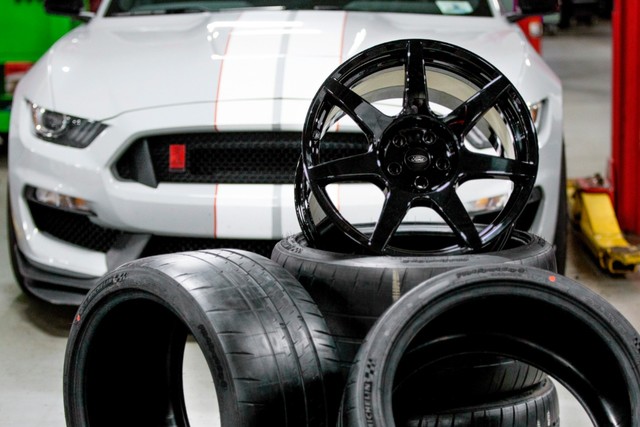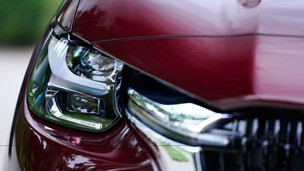Ford has reinvented the wheel for the new Shelby GT350R Mustang, with a little help from NASA’s Space Shuttle technology.
The meanest street-legal Mustang variant yet comes with a full set of ultra high-performance carbon fibre wheels, made using the same process used to make the Space Shuttle’s engine turbines.
Currently, the only other marque offering carbon fibre wheels is Swedish hypercar wizards Koenigsegg, making the GT350R the first and only mass-produced car to come fitted with them as standard.
Developed by Ford and Australian carbon fibre engineers Carbon Revolution to cope with the high temperatures generated by the GT350R’s brakes, the wheels benefit from an aerospace-grade thermal ceramic coating.
Using a plasma arc gun to liquefy ceramic material, the wheels are coated at critical points to shield them from the sorts of incredible temperatures usually generated only by rocket engines.
According to Ford, the coating has all the benefits of lightweight carbon fibre without restricting performance at high speeds, and also helps resist harsh chemicals picked up from the road.

The process also results in a flawlessly smooth surface, which is then polished to a high-gloss black sheen by Ford’s technicians to not only look good, but to ensure a long lifespan for the wheels.
Ford states that the wheels are nearly half the weight of their aluminium equivalents, weighing in at only 8kg, compared to the 15kg wheels that come with the standard Ford Mustang.
As a result, the engineers claim that the GT350R sees serious benefits in handling and acceleration, while the unique wheels also provide a reduction in rotational inertia of more than 40 per cent.
They’re so light, in fact, that the suspension springs and dampers had to be specifically recalibrated to cope with the new wheels and to ensure that the car can respond faster to the road.
Although they’re currently exclusive only to the Shelby GT350R, which isn’t due to be released in the UK, Ford hasn’t ruled out the possibility of introducing the NASA-derived wheels to other cars.
“We believe this is a game changer for the industry,” said Adam Wirth, Ford Performance chassis supervisor, “a great example of improved performance through innovation.”



